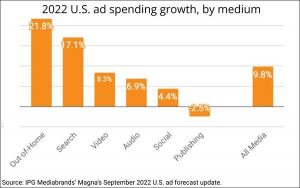The best ABM strategies go beyond targeting the most obvious accounts.
“It’s provocative [for us] to position ABM as entirely different from the status quo of demand gen,” said Jodi Cerretani, senior director of demand generation at RollWorks, in her presentation at The MarTech Conference. “For some organizations and some leaders, the core tenants of ABM truly are a revolution.”
Traditional demand gen, by itself, isn’t enough to encompass an effective ABM strategy; marketers need to treat ABM as a separate activity.
Cerretani distinguishes ABM with these three pillars:
- Identifying high-value targets.
- Engaging buying committees through coordinated marketing and sales programs.
- Measuring the impact against shared goals.
These activities serve the purpose of pinpointing accounts with a high potential to convert and developing more effective marketing strategies targeted toward them.
Here are three ABM strategies, stemming from these pillars, Cerretani believes can help marketers improve their conversion rates.
Incorporate ABM into top-of-funnel channels
“You want to identify your target account list formally and then run it through a program where you can identify who is cold or lukewarm,” said Cerretani. “I’ve called them ‘unaware’ and ‘aware,’ but whatever you call them, that’s who you’re trying to isolate.”
She added, “It should be a high volume of accounts.”
Cerretani recommended that ABM marketers focus on creating top-of-funnel content that aligns with their persona and industry research. This content should be appropriate for that top-of-funnel spot — it’s often best ungated, served up in formats like sponsored content, content syndication and sponsored webinars.
“Sometimes your best chance for conversion is through retargeting,” Cerretani said. “But make sure you’re working with a partner that can allow you to just focus on retargeting your high-fit accounts or high-fit site visitors and not waste any money retargeting low-fit accounts.”
“You need to be thinking multiple channels simultaneously,” she added.
Action in-market accounts
According to Cerretani, actioning in-market accounts is the process by which marketers identify “high-fit accounts and key personas at those accounts that are highly engaged or exhibiting high intent signals.”
Once marketers have that list, she suggests they drill down into the factors that got those accounts on that list. They should analyze their visitors and determine how engaged they are with conversion-friendly content, such as pricing pages or customer case studies. The marketers should also note if their brands are surging for competitor keywords, segmenting out those associated accounts.
“So, for example, if you have a bunch of these accounts that are surging for a competitor keyword, you can isolate those accounts and then pick a CTA that makes sense for the fact that they are surging on competitor keywords,” said Cerretani.
Re-engage lost marketing-qualified leads
“One of the things that people often forget with account-based marketing is that it doesn’t necessarily stop at being impactful at generating new opportunities,” said Cerretani.
When brands are looking to launch a new ABM program, Cerretani believes they should take the core tenants of ABM and apply them to re-engagement campaigns. Her team calls them “wake the dead campaigns,” where they work on developing an audience from disqualified MQLs, or those MQLs that have been accepted by sales but haven’t moved forward. This focus on lost (or unengaged) leads can potentially grow your customer base.
In the end, it all comes back to prioritizing those individual accounts.
“You can measure everything kind of top-to-bottom, from email performance all the way down to the deals that you book and ROI,” said Cerretani. “You should see quick opportunities and deals from this type of motion because it is so powerful.”
The post 3 effective ABM strategies you should consider appeared first on MarTech.
(15)







